
EAST & SOUTH EXPEDITION (C+D)
Information
Experience unforgettable Galapagos adventures with our weekly departures. Our itineraries include full board, two daily guided excursions, and optional activities like snorkeling, kayaking, and dinghy rides. You can also extend your trip with diving programs and extra nights in Galapagos upon request.
DOWNLOAD PDF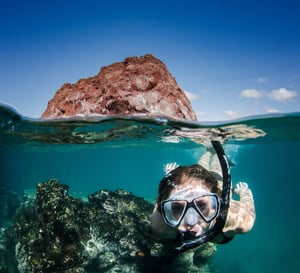
ITINERARY HIGHLIGHTS
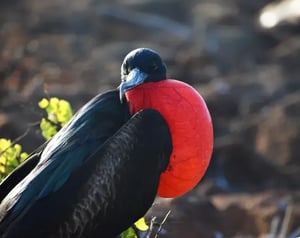
Frigatebird Spectacle
Frigatebird Spectacle
At North Seymour, witness magnificent frigatebirds inflating their red throat pouches, while blue-footed boobies perform their signature courtship dance.
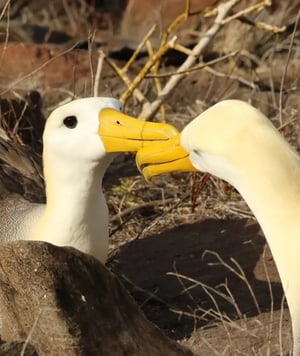
Albatross Colony
Albatross Colony
At Punta Suarez, spot the endemic waved albatross, a rare species that nests here. Watch their intricate courtship rituals and graceful flights.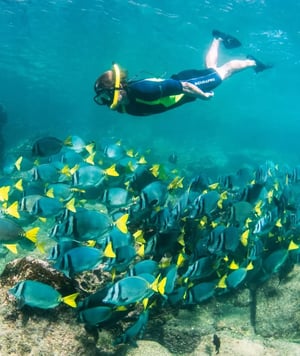
Ultimate Snorkel Spot
Ultimate Snorkel Spot
Dive into the waters of Devil’s Crown, an eroded volcanic crater teeming with sharks, rays, sea turtles, and vibrant fish—one of the best snorkeling sites.DAY BY DAY ITINERARY
Day 1 - Sunday
MORNING:
✈ Baltra Airport. Departure from either Quito or Guayaquil to Baltra Island is a 2 ½ hour flight. Upon arrival in the Galapagos, passengers are greeted at the airport by our knowledgeable guides who will accompany them on a short ten-minute bus ride to the pier where they will board the Coral I or Coral II.
AFTERNOON:
North Seymour Island. This flat, uplifting, island is an important spot to see both magnificent and great frigatebird males courting the females and, we will also likely see courting blue-footed boobies too. Sea lions, swallow-tailed gulls, crashing surf and distant views of the Daphne Islands top off a great visit.
- Difficulty level: Medium
- Type of terrain: Rocky & Sandy
- Duration: 1 hour 45 min hike, 1 hour deep snorkeling
- Landing: Dry

Day 2 - Monday
MORNING:
Charles Darwin Research Station (Santa Cruz Island). Once home to the famous Lonesome George, the last tortoise of the Pinta race. The center is set in the Galapagos National Park Service where various interpretative buildings are available to visit. The grounds, with large stands of native vegetation, are one of the better places to spot some of the seldom-seen Darwin’s finches.
- Difficulty level: Low
- Type of terrain: Flat
- Duration: 1 ½ hour visit
- Landing: Dry
AFTERNOON:
Mosquera Islet. This tiny, low-lying islet, converted into coral sand, is set between the north and south Seymour Islands. It's home to a group of sea lions that come to laze on the soft white sand, it's an excellent spot to observe shorebirds, herons, lava gulls, and boobies. Snorkeling or diving here, one can often see sharks, rays, and barracudas.
- Difficulty level: High
- Type of terrain: Flat volcaninc lava
- Duration: 1 ½ hour walk, 1 hour snorkeling or, 1 hour beach time
- Landing: Wet

Day 3 - Tuesday
MORNING:
South Plaza Island. Sea lions, swallow-tailed gulls, and land iguanas are all present at the landing site. The small island is covered with a carpet of a red succulent studded with Opuntia cacti. At the cliff edge, we spend time watching birds like frigatebirds, flocks of Galapagos shearwaters, and of particular note, flights of displaying red-billed tropicbirds.
- Difficulty level: Medium
- Type of terrain: Rocky
- Duration: 2 hour hike.
- Landing: Dry
AFTERNOON:
Santa Fe Island. After a fabulous snorkel in the turquoise waters of the protected bay, we may have enjoyed time with sea lions, turtles, reef sharks, and spotted eagle rays. Landing on a sandy beach, we spend time watching the abundant sea lions there with us. We begin a walk past a forest of island-endemic giant Opuntia cacti and we can watch the Santa Fe land iguana.
- Difficulty level: Low
- Type of terrain: Rocky
- Duration: 30 min kayaking, 1 hour 45 min hike, 1 hour deep snorkeling or, 45 min dinghy ride
- Landing: Wet

Day 4 - Wednesday
MORNING:
Lobos Island (San Cristobal Island). Isla Lobos is approximately 20 minutes by boat from Puerto Baquerizo Moreno. Once on the island, the trail is about 850 meters and there will be rocky trails and a nice & easy sand trail too. There is a small population of blue-footed boobies and great frigatebirds nests at this site.
- Difficulty level: Medium
- Type of terrain: Rocky - Sandy
- Duration: 1 ½ hour walk.
- Landing: Dry
AFTERNOON:
Interpretation Center & Frigatebird Hill (San Cristobal Island). The interpretation center is full of interesting information and offers the perfect overview of the formation of the Galapagos. Following a hike to Frigatebird Hill (Cerro Tijeretas) we will have a great look at both species of frigatebirds, with the bonus of a beautiful view of the bay below.
- Difficulty level: Low / High
- Type of terrain: Flat path / Rocky
- Duration: 1 hour hike, 1 hour walk
- Landing: Dry
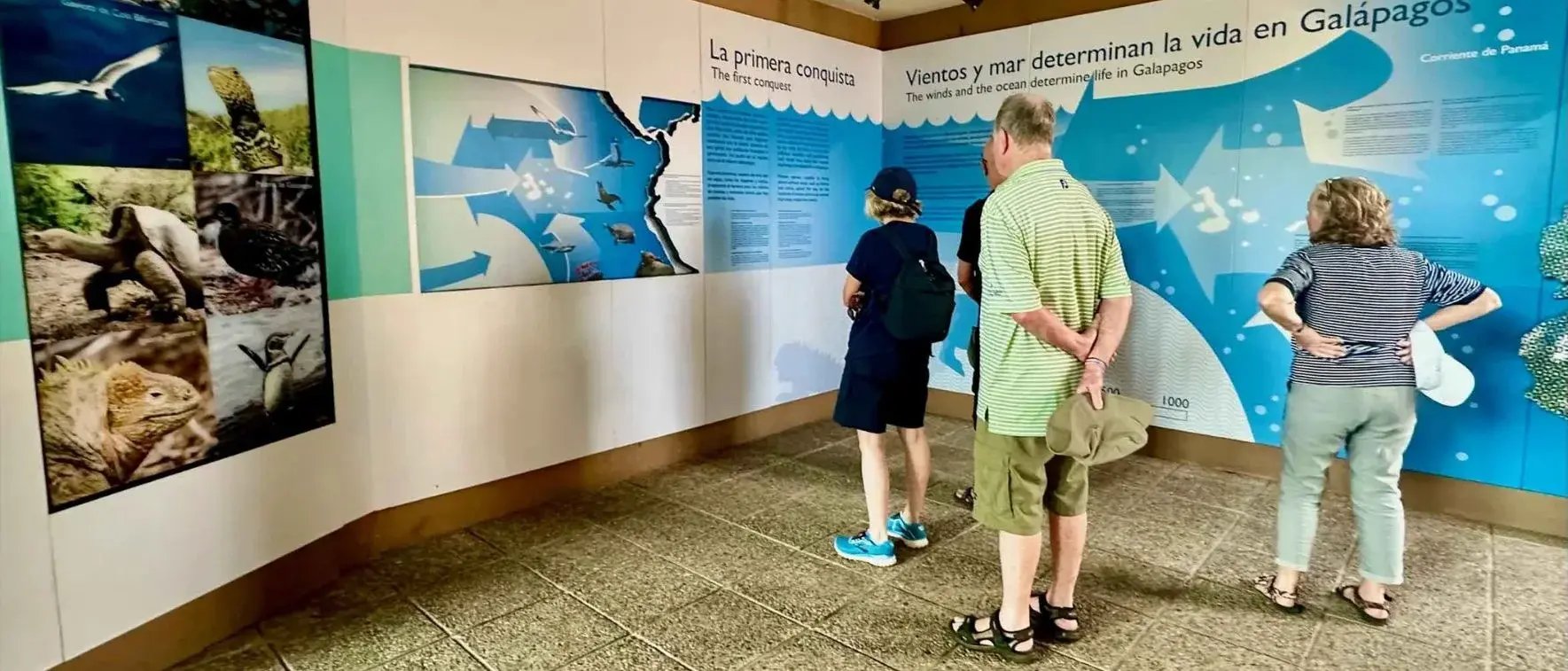
Day 5 - Thursday
MORNING:
Kicker Rock (San Cristobal Island). This ancient and eroded volcanic tuff lava named Leon Dormido or Kicker Rock, is formed from two rocks
approximately 148 m, named for its resemblance to a sleeping lion.
Cerro Brujo (San Cristobal Island). From our dinghy ride, as we head to shore, we are first humbled by the immensity of the stunning cliffs of the Sorcerer's Hill. You can enjoy simply sharing the beach with sea lions, snorkelling from shore, or taking a walk to a hidden lagoon where you
might spot black-necked stilts, ruddy turnstones, whimbrels, and white-cheeked pintails.
- Difficulty level: Low
- Type of terrain: Sandy
- Duration: 1 hour hike, 30 min kayaking or, 30 min dinghy ride, 1 hour 45 min beach or deep snorkeling
- Landing: Dry
AFTERNOON:
Punta Pitt (San Cristobal Island). This is the only place on the islands where we will enjoy the chance to see all three of the booby species in the same place. The red-foots will be perched on the Cordia lutea and small trees, the Nazca´s on the ground near the cliff edge while the bluefoots will be a little further inland. Frigatebirds will be all around and the views are breathtaking.
- Difficulty level: High
- Type of terrain: Rocky
- Duration: 1 hour 15 min hike, 1 hour beach snorkeling or, 30 min kayaking or, 30 min dingy ride
- Landing: Wet
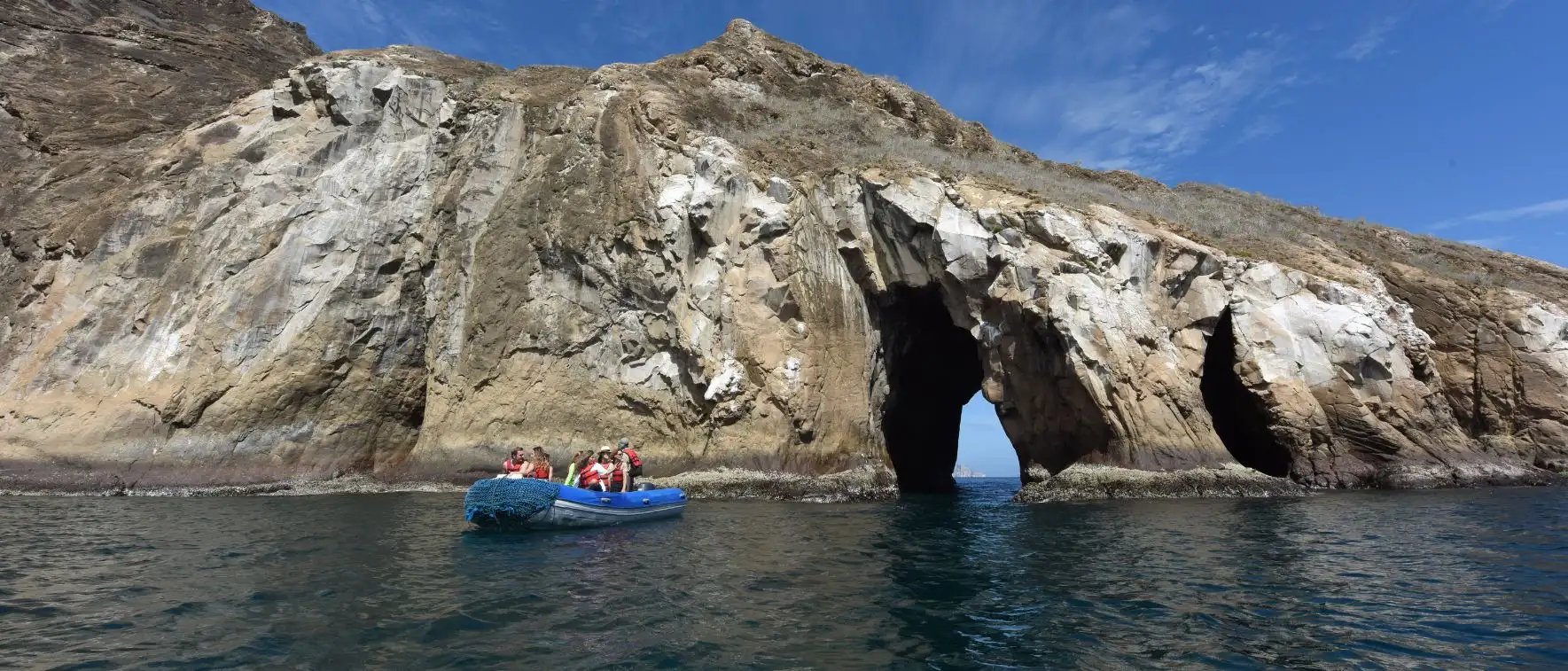
Day 6 - Friday
MORNING:
Punta Suarez (Española Island). Punta Suarez is a naturalist´s paradise. The oldes extant island in the archipelago is our only opportunity to commune with the endemic wave albatross during their breeding season between April and December. With luck, we can watch their complex courtship display.
- Difficulty level: High
- Type of terrain: Rocky
- Duration: 2 hours 15min hike
- Landing: Dry
AFTERNOON:
Gardner Bay (Española Island). One of the most stunning beaches in all of the Galapagos. The long, white, sandy beach, lapped by turquoise waters, home to a colony of Galapagos sea lions. Hood mockingbirds, endemic to this particular island. We can also snorkel here from the beach, in the shallows of the bay.
- Difficulty level: Low
- Type of terrain: Sandy & flat
- Duration: 1 hour 45 min hike, 45 min deep or beach snorkeling or, kayaking
- Landing: Wet

Day 7 - Saturday
MORNING:
Punta Cormoran (Floreana Island). Our walk takes us to a large, shallow lagoon, often inhabited by a variable number of shockingly pink greater flamingos. We arrive at a powdery white beach, a nesting area for green turtles. Devil’s Crown is one of the favorite snorkeling sites on the islands..
- Difficulty level: Medium
- Type of terrain: Rocky
- Duration: 45 min dinghy ride or, 45 min walk, 30 min kayaking, 1 hour 15 min snorkeling
- Landing: Dry
AFTERNOON:
Post Office (Floreana Island). The famous Post Office Barrel. Claimed to have been first set up in 1793 by Captain James Colnett. The system involved whalers and fur sealers would leave addressed letters in the barrel to be picked up by homeward-bound colleagues. Actually visitors often take letters and handdeliver them to their home countries.
- Difficulty level: Low
- Type of terrain: Sandy
- Duration: 30 min walk, 30 min kayaking, 1 hour snorkeling
- Landing: Wet

Day 8 - Sunday
MORNING:
Highlands Tortoise (Santa Cruz Island). Dry landing. In the Galapagos mountains, admire diverse bird species like finches, flycatchers, crakes, warblers, and egrets (often perched on tortoises' shells). The journey to the reserve showcases the island's contrasting ecosystems, from coastal areas to dense humid forests. Look out for Galapagos Giant tortoises wandering through pastures. This spot is a haven for birdwatchers, as it hosts a wide range of land birds that reside or migrate
- Difficulty level: Low
- Type of terrain: flat & muddy depending on the season
- Duration: 1 ½ hour walk, 45 minute drive
- Landing: Dry
Baltra Island Airport. After the visit, passengers will be transferred to the airport for their return flight to Guayaquil or Quito.

ROUTE MAP OF THE EAST & SOUTH EXPEDITION

MEET THE UNIQUE WILDLIFE OF THIS EXPEDITION
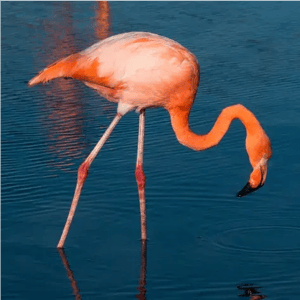
FLAMINGO
Explore
BLUE FOOTED BOOBY
Explore.webp?width=300&name=DAY%206%20AM%20(C).webp)
GIANT TORTOISE
Explore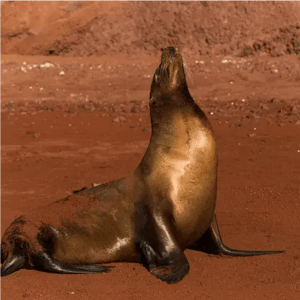
SEA LION
Explore
FRIGATE BIRD
Explore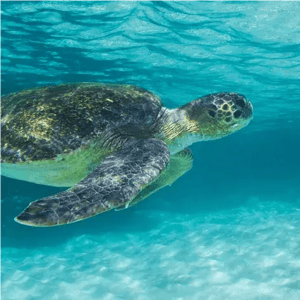
SEA TURTLE
Explore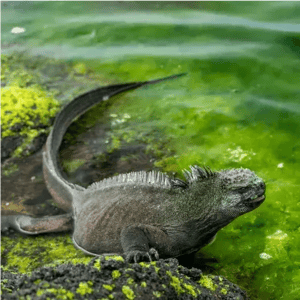
MARINE IGUANA
Explore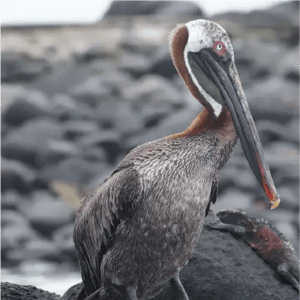
GALAPAGOS PELICAN
Explore
FUR SEAL
Explore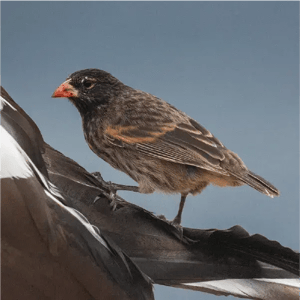
DARWIN FINCH
Explore
NAZCA BOOBY
Explore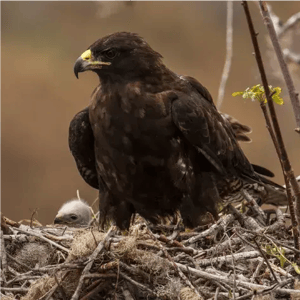
GALAPAGOS HAWK
Explore
MOCKINGBIRD
Explore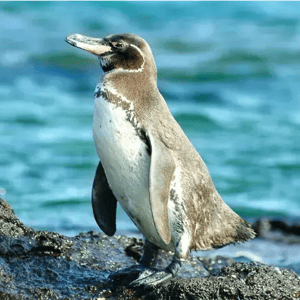
GALAPAGOS PENGUIN
Explore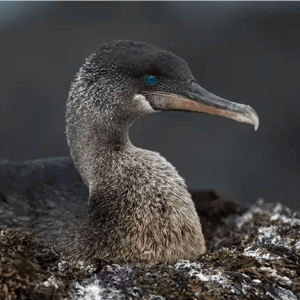
FLIGHTLESS CORMORANT
Explore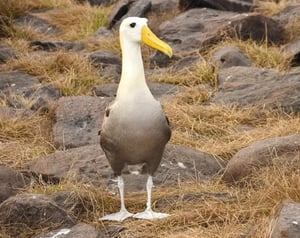
LAND IGUANA
ExploreOTHER EXPEDITIONS
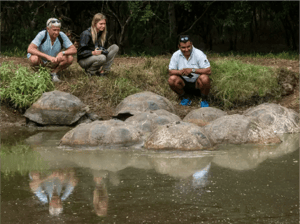
4 days - 3 nights
More information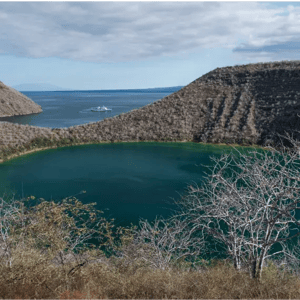
5 days - 4 nights
More information
4 days - 3 nights
More information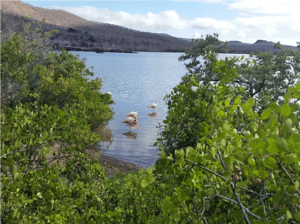
5 days - 4 nights
More information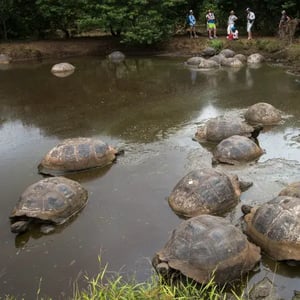
8 days - 7 nights
More information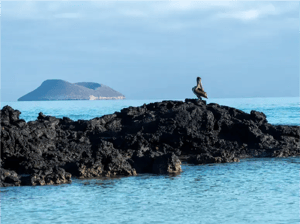
8 days - 7 nights
More information